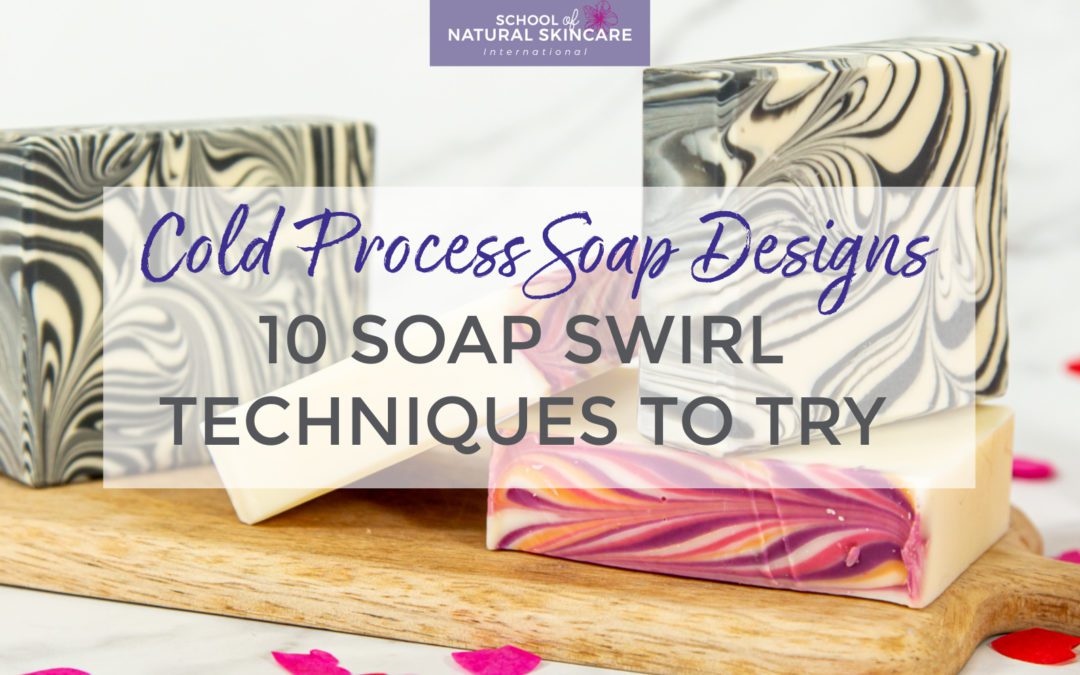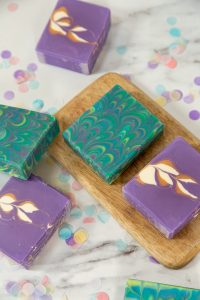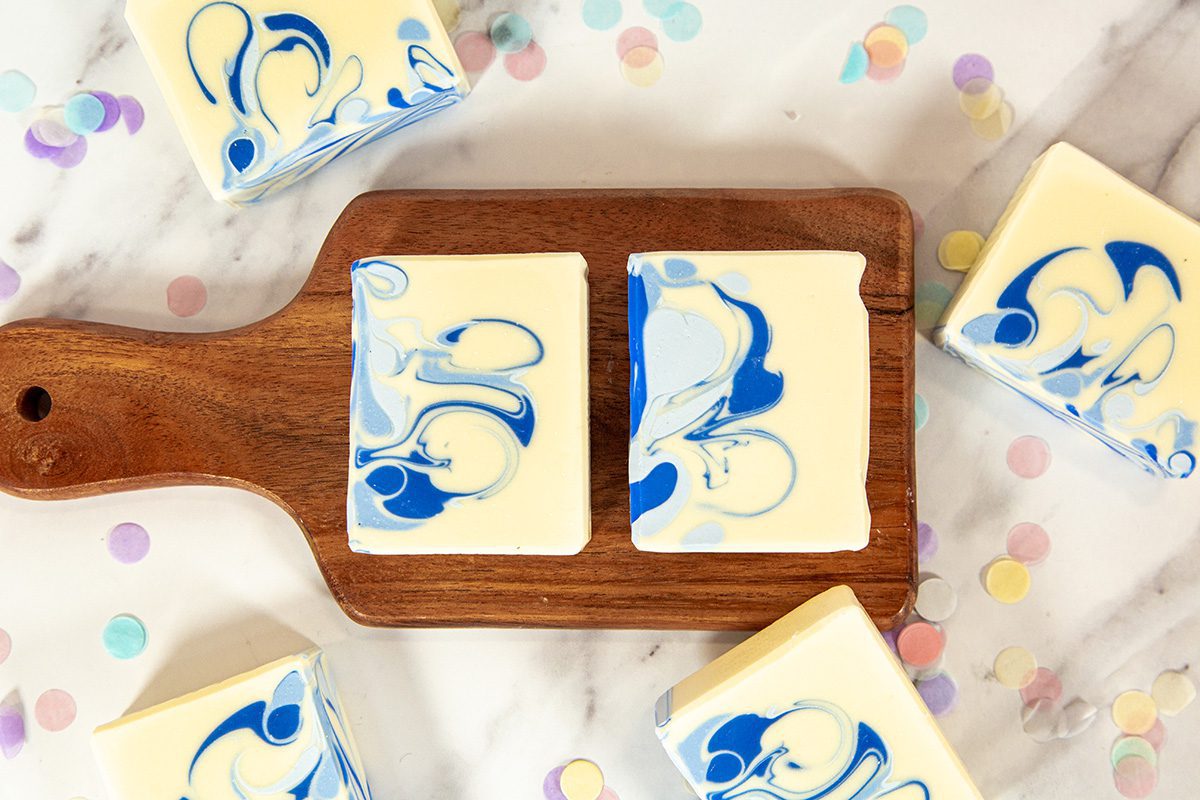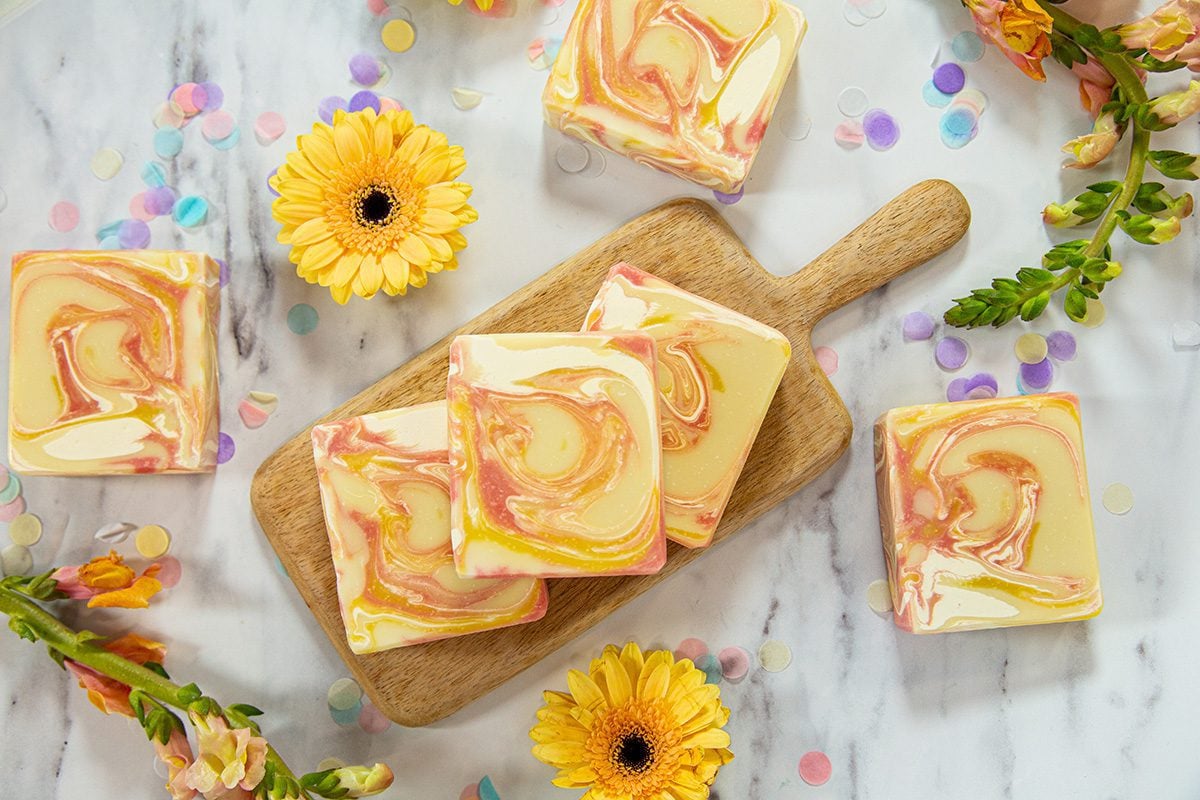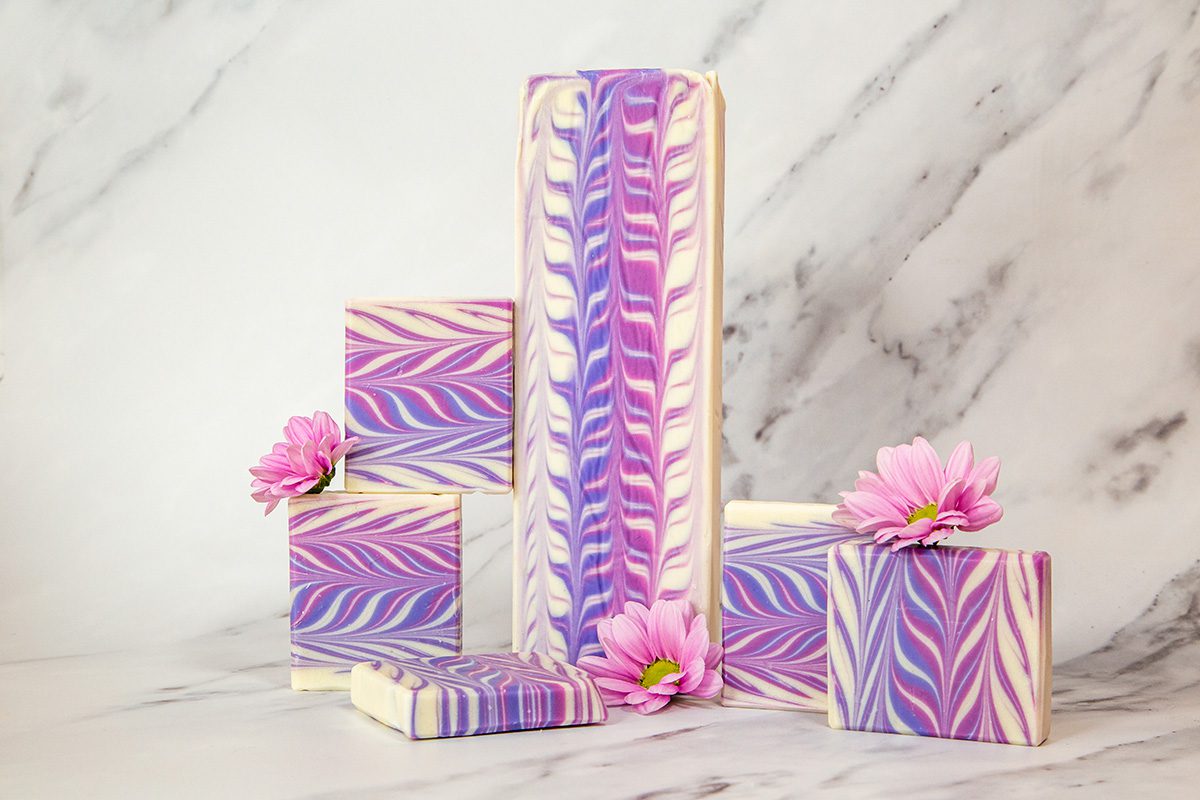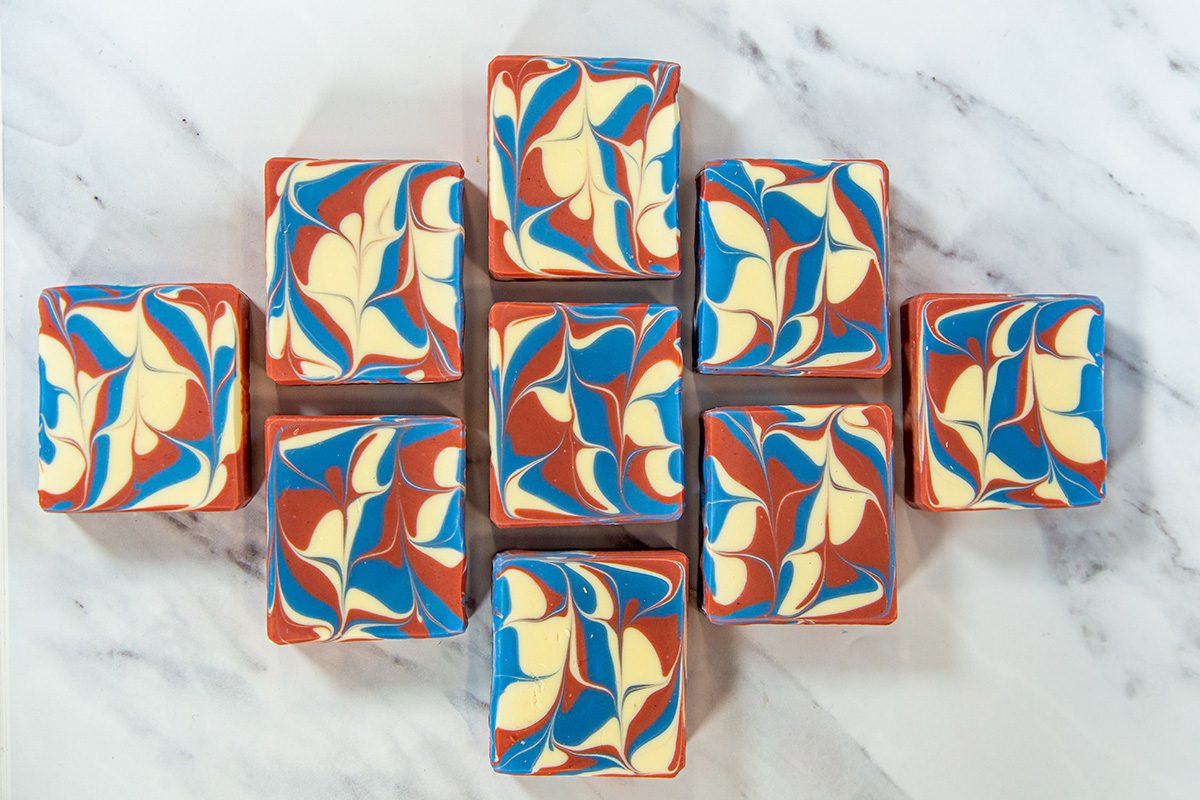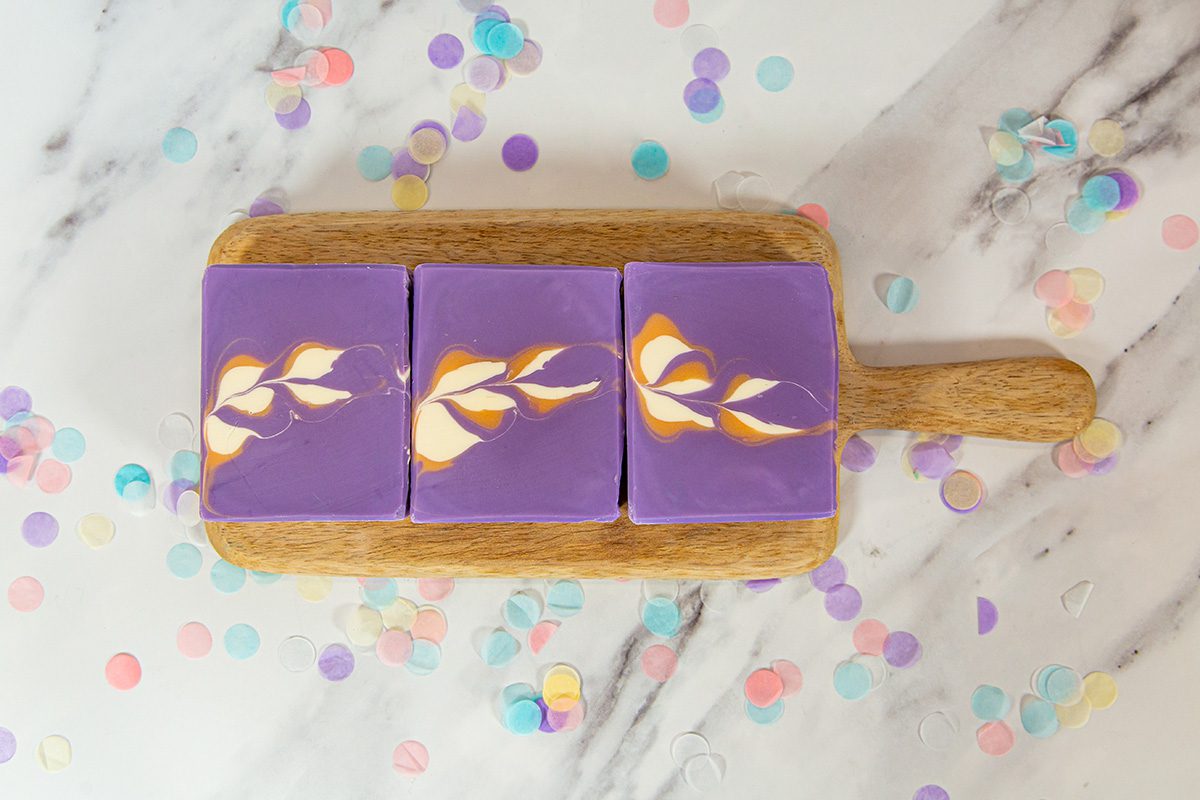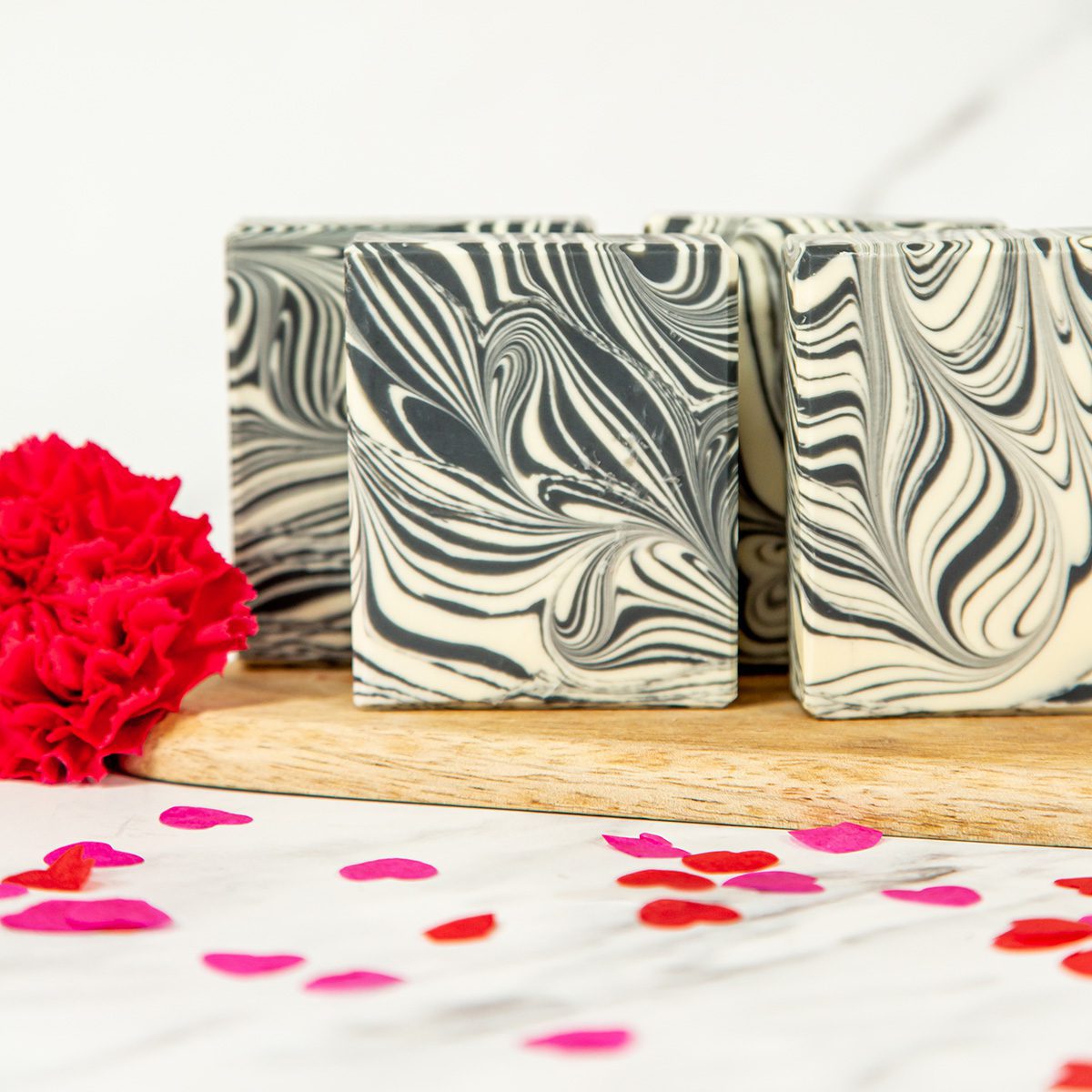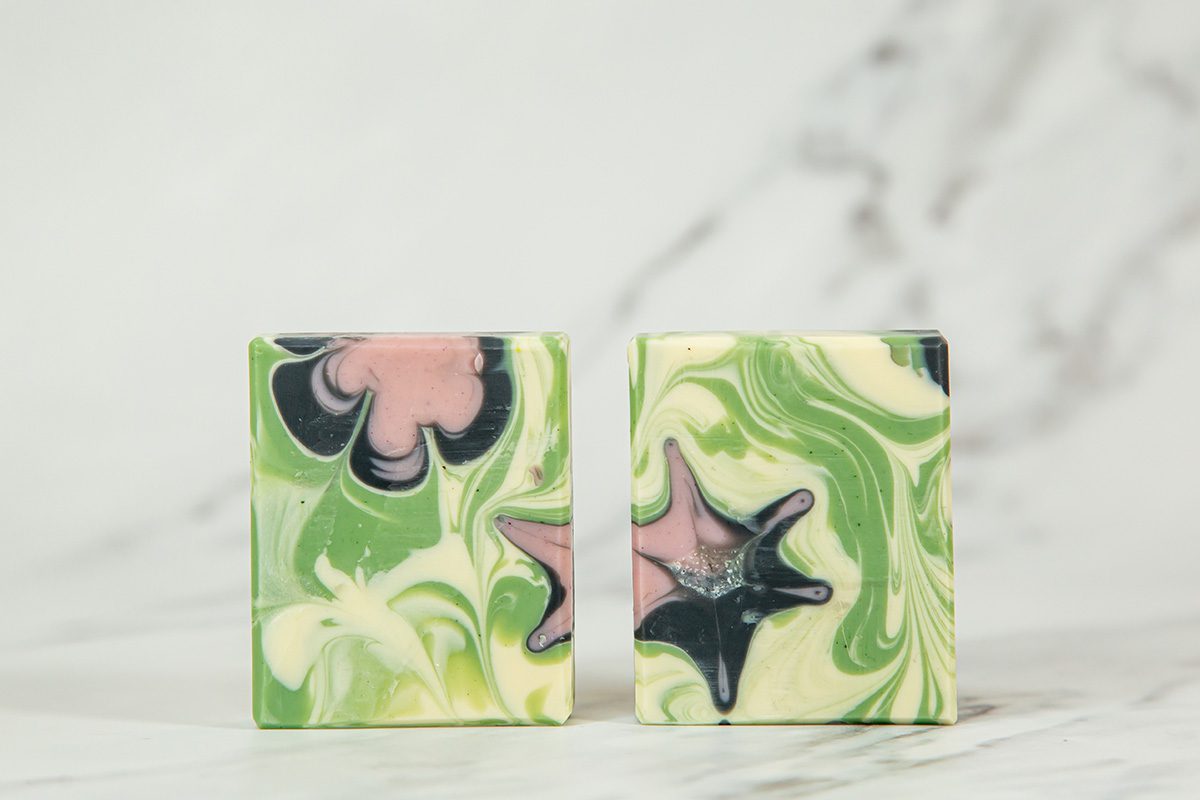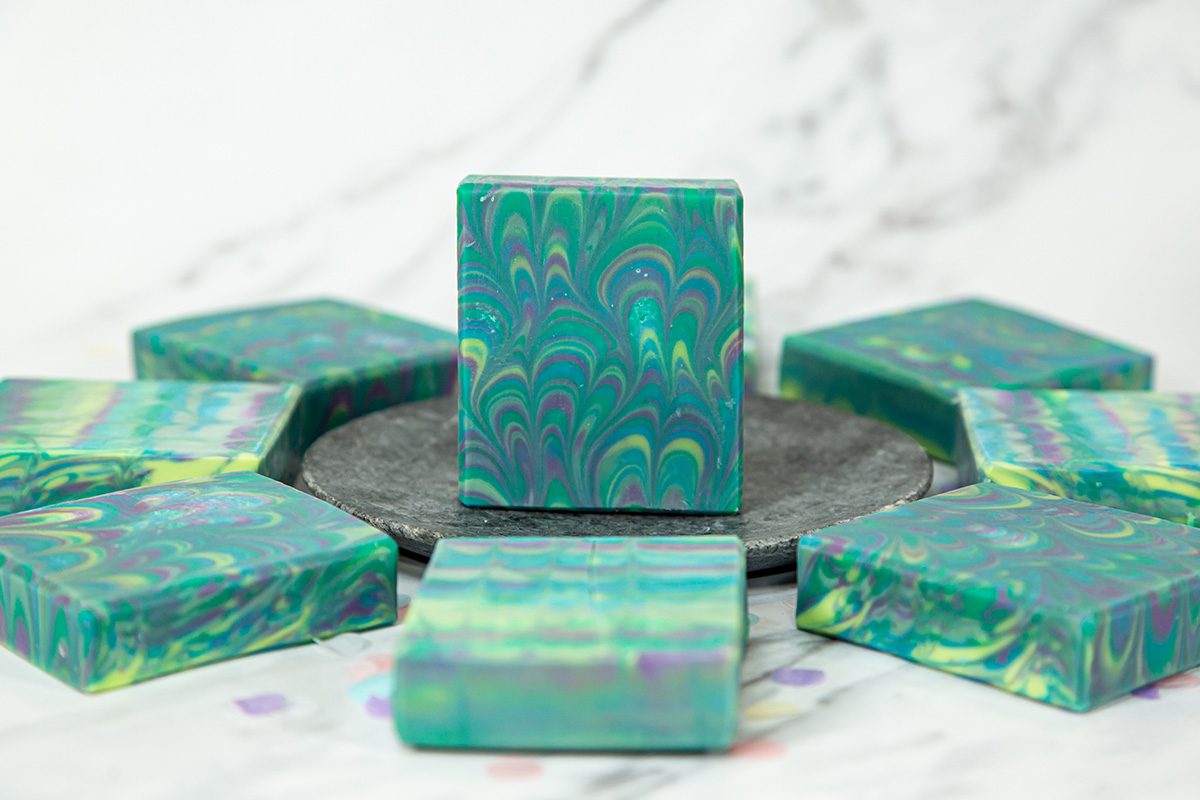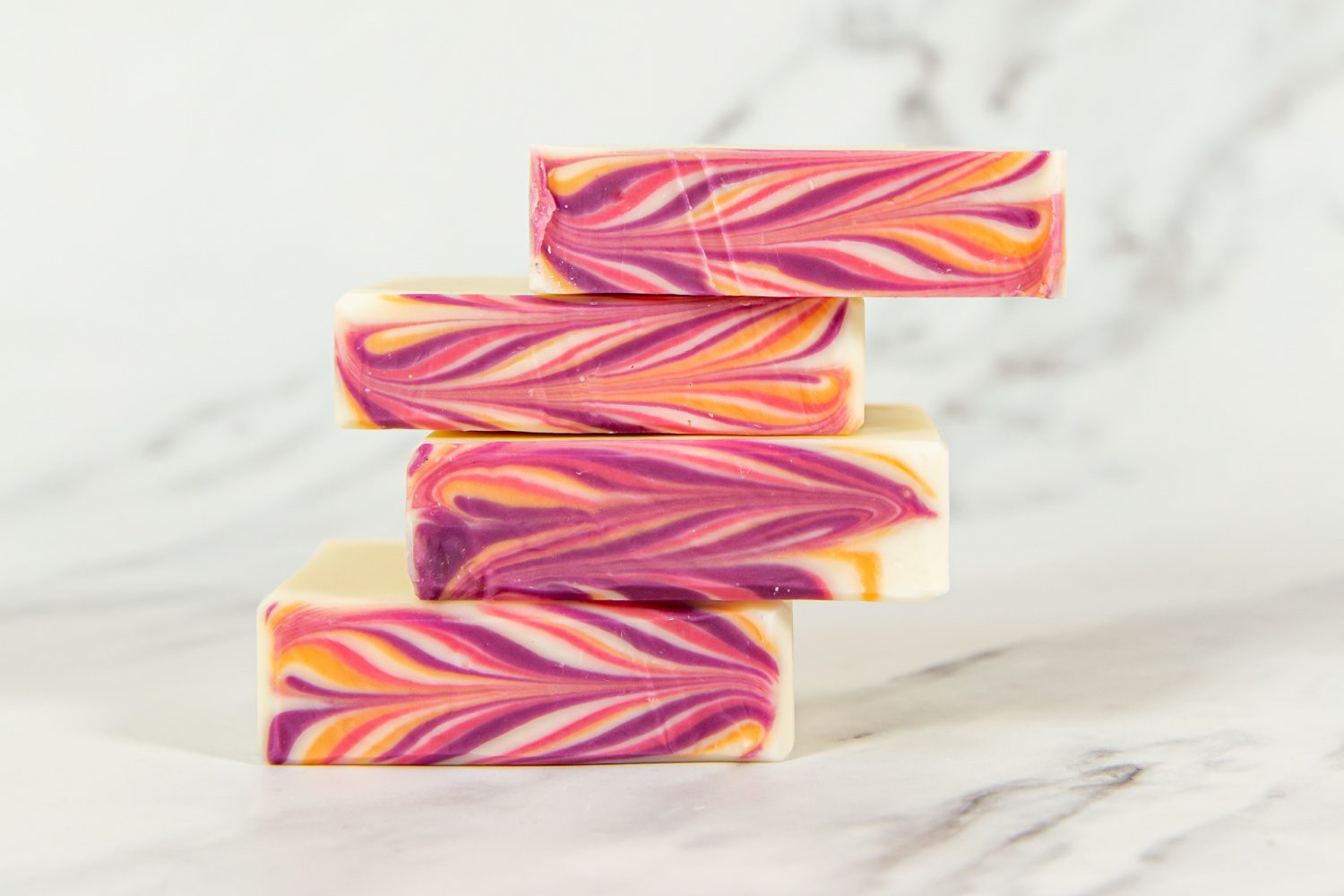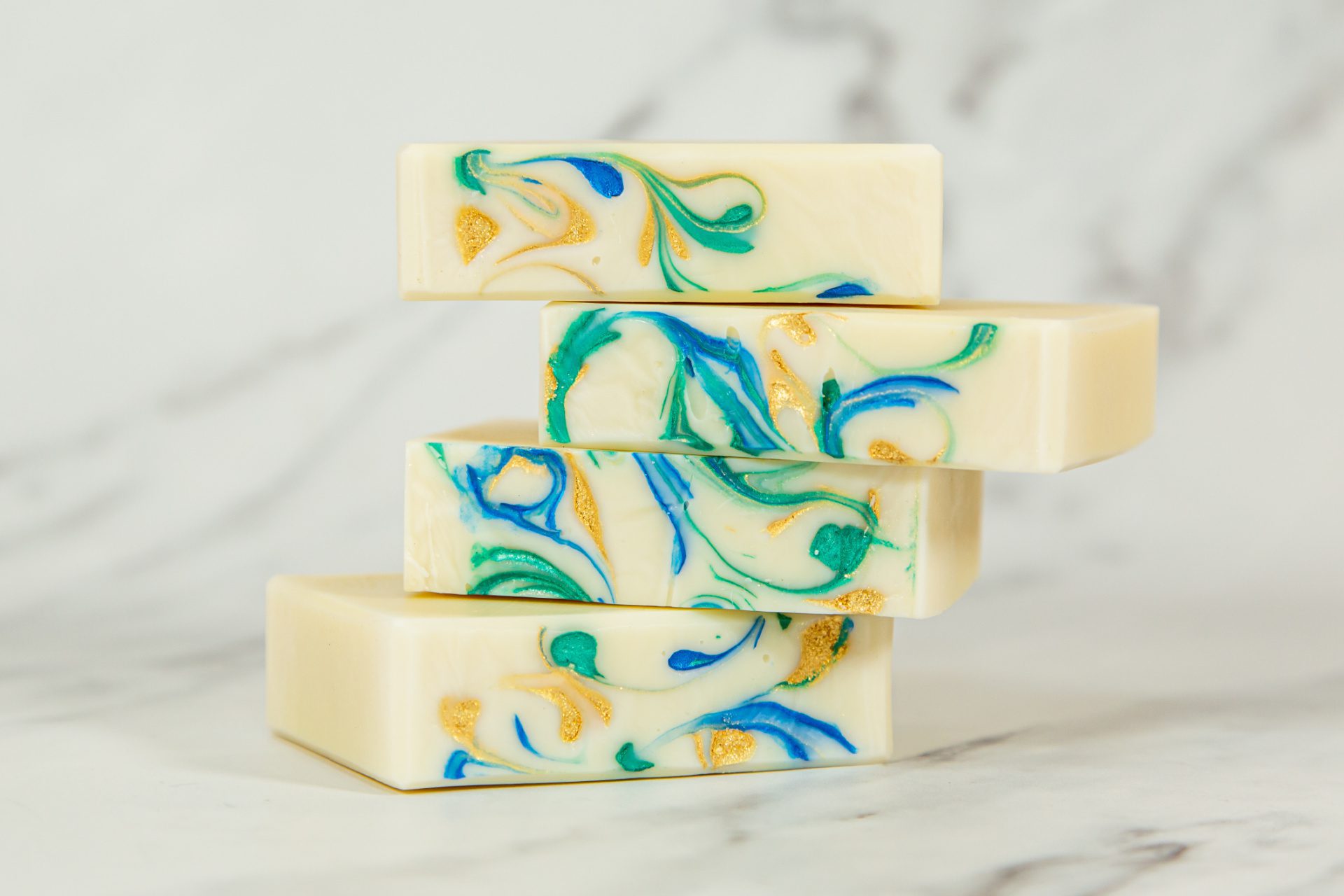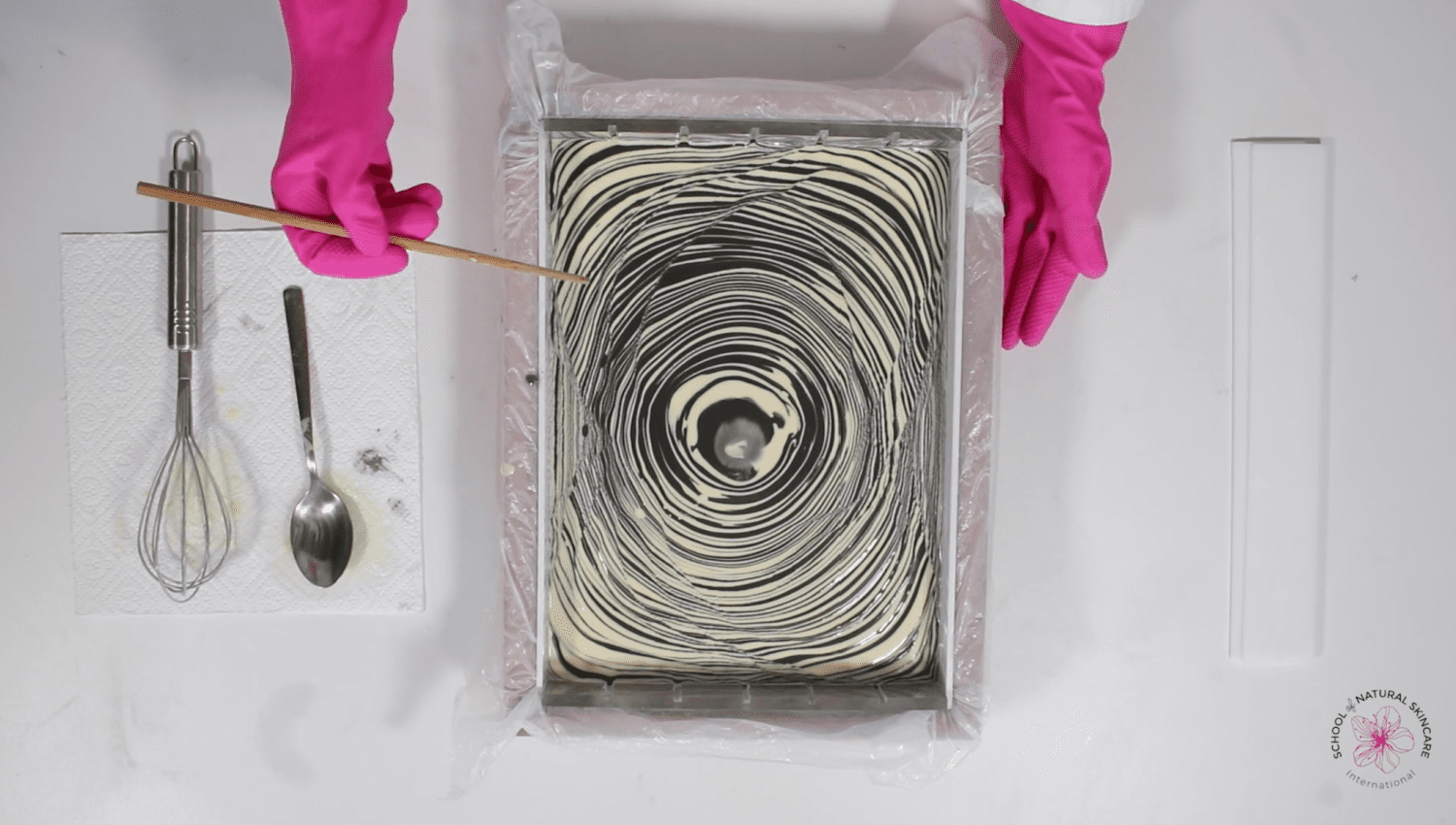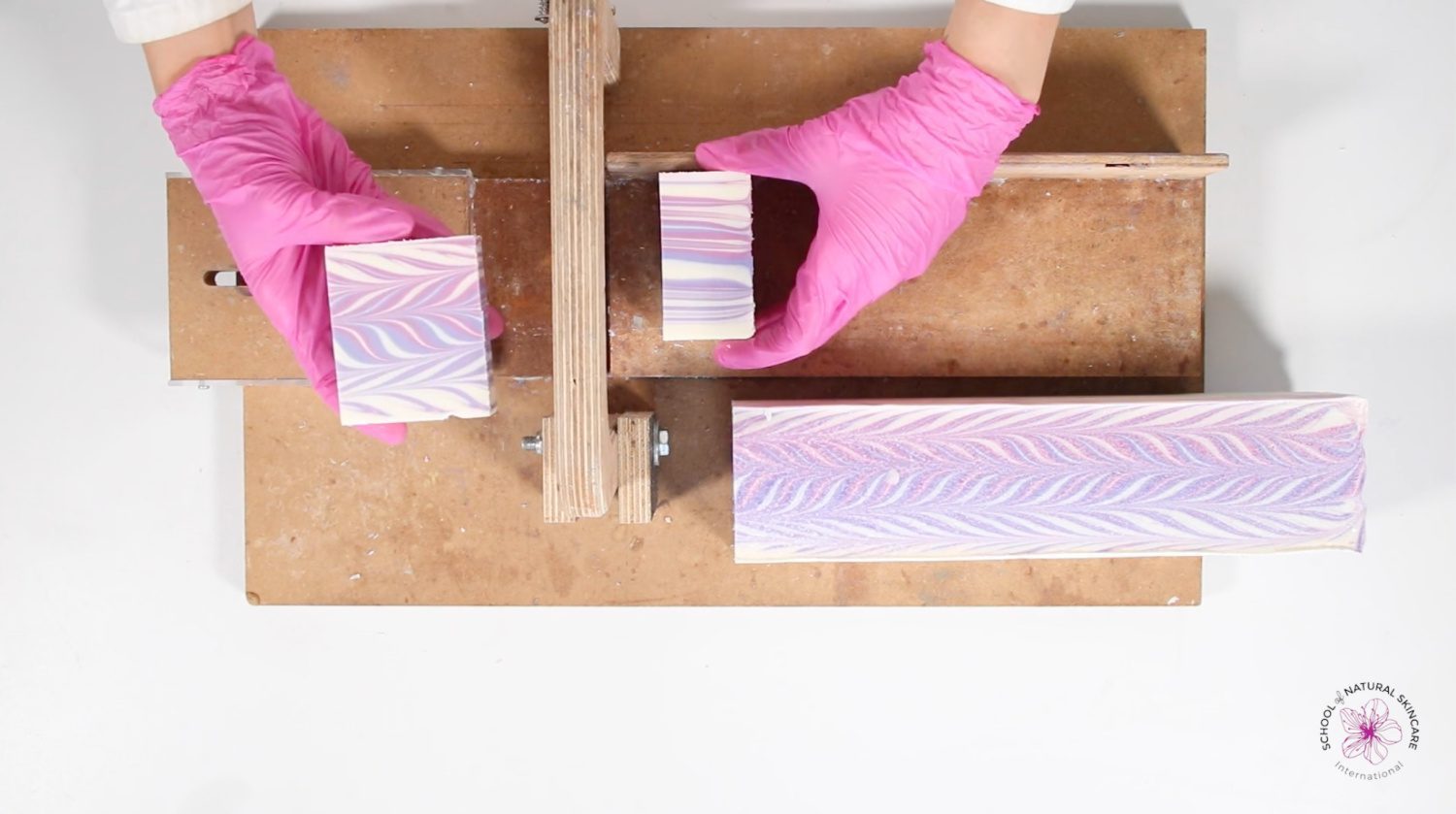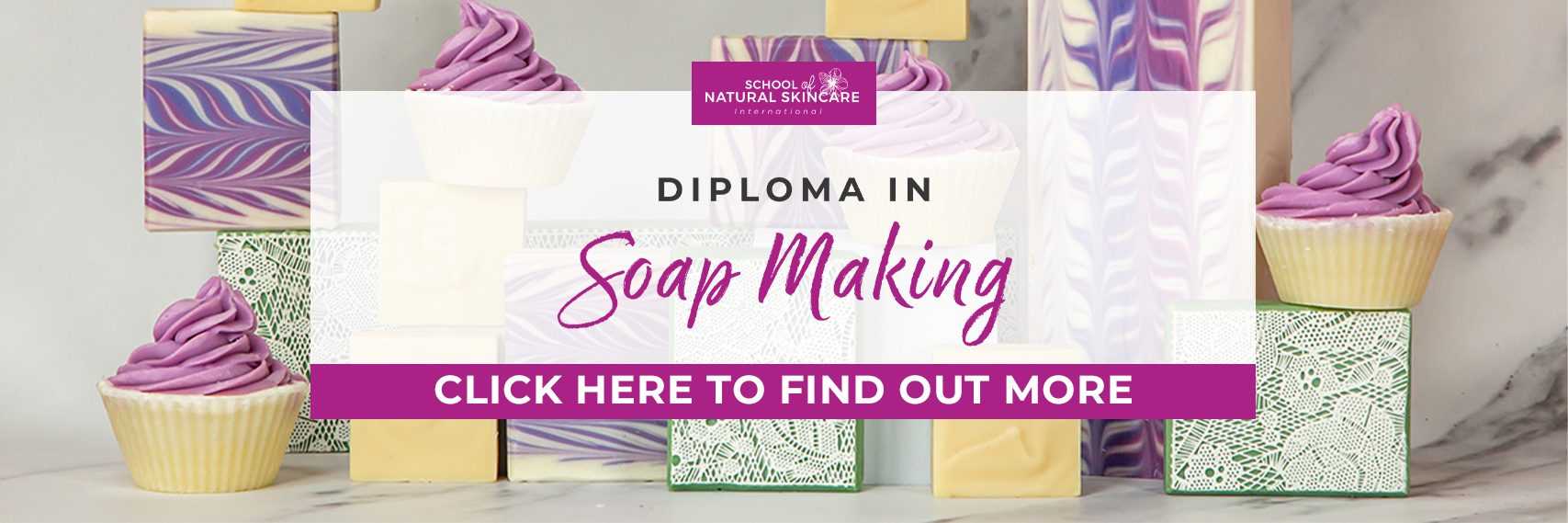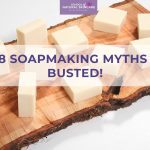One of the joys of making cold process soap yourself are the many soap designs you can choose from. You can use different soap swirl techniques to create different cold process soap designs and the results are so beautiful it is like making soap art!
Learning soap swirl techniques will allow you to take your cold process soap making skills to the next level. Decorating soap is fun and rewarding, and by learning a few techniques you’ll be able to create truly stand-out soap bars that not only provide gentle and nourishing cleansing to the skin but are beautiful, too.
Keep reading for tips on how to make swirl soap, including 10 cold process soap design ideas for you to try.
Soap swirls: 10 cold process soap design ideas
- Drop swirls
- In-the-pot (ITP) swirls
- Taiwan swirl
- Hanger swirl
- Secret swirl
- Column pour
- Pipe divider swirl
- Peacock Swirl
- Simple swirl
- Mica swirl
These soap swirl techniques each create a unique soap design. Below we share a photo of soap bars made using each of these swirl techniques, plus an explanation of how each design is made, so you can be inspired to have a go yourself and create your own pieces of soap art.
Each of these techniques is covered in detail in our Diploma in Soap Making. Inside our dedicated Advanced Soapmaking: Soap Swirling Techniques module you’ll find a video tutorial showing you exactly how to carry out each swirling technique, plus step-by-step instructions and photos so you can quickly and easily learn to make different soap designs.
Soap design 1: Drop swirls
Skill level: Easy
Mold: Loaf mold
Drop swirls are simple and easy-to-make designs in cold process soap. They do not require lots of time or experience, yet they create a lovely effect in finished soaps. In this technique, the soap mixture is divided into two or more parts, each part colored differently. The soap is then poured into a loaf mold, in smaller portions, rotating the colors.
Soap design 2. In-the-pot (ITP) swirls
Skill level: Easy
Mold: Loaf mold
In-the-pot (ITP) swirl is also a simple soap swirl technique. The cold process soap mixture is divided into two or more parts, each dyed differently and, as the name implies, these are mixed ‘in the pot’ as opposed to in the mold. During the process, some of the soap colors blend with the others whilst some remain separated, creating a lovely effect.
Soap design 3. Taiwan swirl
Skill level: Fairly easy
Mold: Loaf mold
The Taiwan swirl is a very elegant soap swirl and fairly easy to make in a loaf mold. A Taiwan swirl involves placing dividers in the mold and pouring different colors into different sections and then using a rod in a specific way to create the swirl pattern. The Taiwan swirl is an example of a soap that needs to be cut horizontally as opposed to regular vertical cutting to see the full soap swirl design.
Soap design 4. Hanger swirl
Skill level: Fairly easy
Mold: Loaf mold
The hanger swirl technique requires a wire. It can create many different results, including a zig-zag design or round swirl pattern, depending on how soap colors are poured into the mold, and how the wire is then moved to swirl the colors. Every design is attractive and unique!
Soap design 5. Secret swirl
Skill level: Challenging
Mold: Loaf mold
The secret swirl is a challenging swirl that requires good experience with soapmaking. It is called a secret (or hidden) swirl since the swirling result is not visible until the soap is cut into bars.
Soap design 6. Column pour
Skill level: Easy
Mold: Slab mold
Column pour uses a slab mold and is a simple technique to create lovely colorful soaps. An object that acts as a ‘column’ is placed into the middle of a lined slab mold and different soap colors are poured onto the column. This creates concentric circles that are then swirled with a rod.
Soap design 7. Pipe divider swirl
Skill level: Easy
Mold: Slab mold
This technique utilizes PVC pipes (like the ones used in plumbing) and soap dyed in different colors. Some colors are poured into the pipes and others into the mold.
Soap design 8. Peacock Swirl
Skill level: Challenging
Mold: Slab mold
The peacock swirl takes quite a long time to create, because the different colored soap is poured into the mold in thin lines. A tool called a ‘soaping comb’ is very handy for this swirl as many parallel lines are required.
Soap design 9. Simple swirl
Skill level: Easy
Mold: Loaf mold
Many cold process soapmakers like to decorate the top of a soap loaf, to make it look prettier. In most cases, not all of the colored soap will be used during swirling; there are usually some leftovers that can be used to decorate the top of the loaf. A rod or chopstick is used to create swirls just at the very top of the soap.
Soap design 10. Mica swirl
Skill level: Easy
Mold: Loaf mold
Similar to the simple swirl technique, shimmery mica can be used to decorate the top of a soap. When we use colored micas to dye soap, the mica loses its shimmery appearance.
However, if we keep the mica just on the top of the soap, it gives a lovely shimmery result.
Soap swirl techniques FAQs
How difficult are the soap designs to achieve?
While they look complex, many of the soap swirling techniques are actually easy to carry out. Above we have indicated if each soap design is easy, fairly easy or challenging to create.
What swirl tools do you need to create beautiful soap designs?
Making detailed swirls in cold process soap requires a few pieces of additional equipment. Luckily it’s easy and inexpensive to obtain and you may already have some of it at home.
- Measuring cups – since soap swirls require soap in different colors, we usually divide the soap mixture into separate containers, eg measuring cups.
- Squeezy bottles – useful for pouring soap in very fine lines.
- Pipettes are very handy when adding the pigments to the soap mixture.
- Dividers – some swirls require soap to be poured into the mold using one or more mold dividers.
- Rods – a rod or a stick is often needed to create swirls. A glass mixing rod can be used, as well as wooden sticks, eg a chopstick.
- Wire – for certain swirls, a piece of coated wire is needed such as rubber-coated electrical wire.
What kind of soap recipe do you need for making soap swirls?
Almost any cold process soap recipe can be used for making simple swirls, but more
advanced swirls require a very slow moving recipe – this way you will have enough time to divide the soap into several containers, color each of them and then slowly pour all of the soap.
How can different molds and cutting techniques affect soap design?
The type of mold you use and how you cut the soap can also affect the design of the soap.
Many soap swirl techniques such as Drop swirls, In-the-pot (ITP) swirls, Taiwan swirl, Hanger swirl and Secret swirl are made in a regular loaf mold.
Other swirling techniques, such as Column pour, Pipe divider swirl and Peacock swirl are designed to be created in a slab mold. This is a type of mold that resembles a tray – it is shallow (the depth corresponds to the thickness of a finished soap bar) and large.
In a loaf mold we see the top of finished soap bars, whereas in a slab mold we see the face of a finished soap bar. This permits us to easily create swirls that are visible while we work.
Usually soap bars are cut vertically but some, such as the Taiwan swirl, require horizontal cutting as the pattern you see on the top of the soap loaf is only visible when the soap is cut horizontally.
An advanced online soap making class that teaches you soap design and soap swirling techniques
Whilst many of these designs are easy to create, knowing the exact technique to follow is important.
That’s why in our online soap making class Advanced Soapmaking: Soap Swirling Techniques we provide a step-by-step video tutorial for each technique plus a beautiful downloadable textbook featuring step-by-step photography to help you.
Advanced Soapmaking: Soap Swirling Techniques is the second module of Diploma in Soap Making. This four-part course is the most comprehensive online soap making Diploma course available covering four areas of soap making:
Part 1: Cold Process Soap Making
Part 2: Advanced Soapmaking: Soap Swirling Techniques
Part 3: Advanced Soapmaking: Hot Process Soap
Part 4: Advanced Soapmaking: Liquid Soap
Join the Diploma in Soap Making and get started immediately. You’ll study online from wherever you are in the world and join our private online student peer-peer support group hosted on Facebook.
If you have any questions, please email our customer service team using hello@schoolofnaturalskincare.com
Alternatively, if you are already experienced at making cold process soap and would like to learn soap swirling techniques, or how to make other types of soaps – hot process and liquid soaps, then send us an email and we’ll be happy to advise you about the options available.
If you are a member of our Natural Cosmetic Formulation Club, you’ll be able to access all of the soap making modules – cold process soap making, advanced soap swirling, hot process soap making and liquid soap making – inside the Club. Simply log in and go to the courses section on your dashboard and search for them all there.

